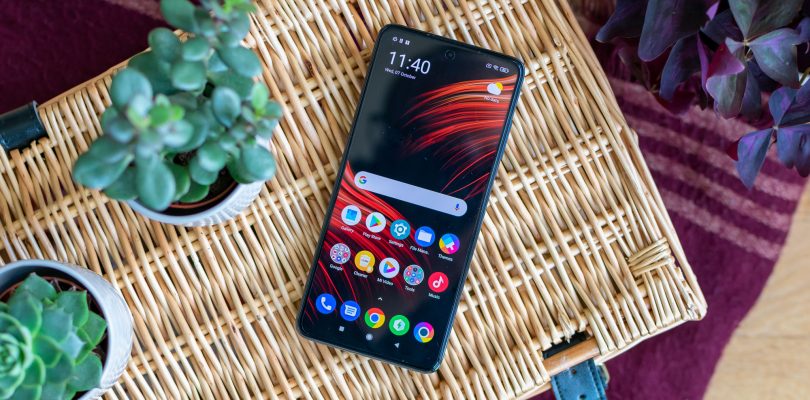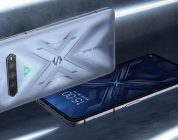The Chinese manufacturer Xiaomi returns to the load with the POCO series, being also one of the brands that have presented the most terminals this year with about 20 (and what remains). Today’s protagonist is nothing less than the Xiaomi POCO X3 NFC, a full-fledged gaming phone available for just 220 euros that are emerging as the best for its price.
Why the best? Take a look at its 6.67″ 120Hz IPS screen, its Snapdragon 732G CPU, or its brutal 5160 mAh battery with a 33W fast charge. Its design is very well worked, and its 4-camera module is quite original, delivering the best performance and versatility in mobiles at this price and even higher. If you want to know everything about this new POCO, stay with us!
Unboxing
The Xiaomi POCO X3 NFC will arrive in a small box completely adjusted to the phone’s measurements, or rather to the silicone case that is included. This will be made of solid rigid cardboard, and we will slide it open, which is no different from what we see in other products.
After opening the box, we will first find a box with the documentation and the cover. Lower will be placed wrapped in plastic protection, and finally, the connection and charging elements in a plastic mold.
Xiaomi POCO X3 NFC Review
The bundle will have the following elements:
Xiaomi POCO X3 NFC
Power adapter
USB Type-C cable
Transparent silicone shell
Screen saver
SIM removal tool
User's Guide
Warranty cardBoth the screen protector and the case will be included in all cases, so we have everything necessary to leave the terminal well protected, at least in the first months of use.
Design of the Xiaomi POCO X3 NFC
Xiaomi POCO X3 NFC Review
We can say that the design of the Xiaomi POCO X3 NFC is very well worked in terms of final aesthetics. Although we must be aware that it is a terminal of just over 220 euros, we will notice it in the materials used. We have a P2i plastic back cover with IP53 protection that will protect the terminal from dust and water splashes.
It will be available in two colors, a beautiful shiny gray like the model we reviewed and electric blue. In both cases, we find excellent finishes, with a peculiar central band of diagonal lines on the back and the distinctive POCO in large size. It is a fairly large and heavy terminal, at 76.8mm wide, 165.3mm high, and 9.4mm thick, weighing 215g.
Xiaomi POCO X3 NFC Review
The rear area uses a slightly curved design to improve grip, which is quite good and safe due to its wide measurements. Of course, after spending time and using it more, it will be noticed that the plastic construction is far from being as good as glass, especially with the sound it makes when touched. The touch seems excellent to us, and we would say that the frame is at a higher level since it feels quite solid in touch. This has the same color as the rear area and a rounded style.
The Xiaomi POCO X3 NFC stands out for its rear camera panel, both for its position and its notoriety since it is at least 2 mm thick and is very out of place. It will not be much of a problem when we use a case, but the cameras will be too exposed without it. It uses an asymmetrical center position in the shape of a 5 point dice and a flat cut on the top and bottom edge. The area is covered by anti-scratch glass, integrating the flash and leaving a circumference around it, informing of the MP of the main sensor.
Xiaomi POCO X3 NFC Review
We now go to the upper part of the terminal, where we have a 6.67″ screen with quite optimized frames despite being an IPS panel. The largest will be the bottom, while the sides and top are well adjusted to provide an 84% usable area. A hole in the screen for the selfie camera is very interesting in mobile of this price, being quite small and located in the central area. The upper speaker occupies part of the upper edge, making it quite discreet and with good aesthetics.
We go to the side areas of the Xiaomi POCO X3 NFC, where we will find some peculiarities, such as the fingerprint sensor. Being an IPS panel, it is impossible to place it on the screen, so the unlock button is used directly for its integration. It is not so comfortable but wide and perfectly accessible, so we take it for good. Next to it, on this right side, we will have the volume up and down buttons.
In the upper frame are installed the noise-canceling microphone, main microphone cipal and the infrared sensor, a detail already rarely seen in terminals. The left side frame is left with the removable tray for dual Nano-SIM and MicroSD memory in the upper corner. Finally, the lower frame has the USB-C connector for charging and data, the opening for the speaker, a second noise-canceling microphone, and the 3.5 mm jack for audio. It is seen that the mid-range and input range are still reluctant to eliminate this connector, and it is good news.
About the case, we can say that it is quite thick, especially the rear area, to cover the wide block of cameras. An additional edge has been placed on it to avoid scratches when resting on the ground. It is annoying to have a plug for the USB-C, although we already anticipated that the passage through the charging station would not be too continuous due to the huge battery.
Screen at the level of a gaming terminal
Xiaomi POCO X3 NFC Screen
And if something stands out or breaks the trend in this Xiaomi POCO X3 NFC for its price, it is the screen. We don’t have an AMOLED panel, this is out of reach, but instead, we have a 6.67-inch PS LCD panel capable of delivering a 120Hz refresh rate. Plus, it features a 240Hz touch polling rate to make it a full-fledged gaming display.
The DotDisplay technology used leaves us a native resolution of 1080 x 2400 pixels, making a density of 395 dpi. It has a brightness of 450 nits and a typical contrast of 1500: 1, which is compatible with HDR10, something that does surprise. The image format is 20: 9, ideal for daily vertical use and landscape mode for games, with Corning Gorilla Glass 5.
The fluidity experience offered by this screen is fantastic, at the level of terminals of 600 euros or more with the same refresh rates. It will be the only one of its kind, since for this price, for now, we do not find anything like it, normally staying at 90 Hz at most. We can choose between the 120 Hz and 60 Hz modes from the screen configuration options, always maintaining the same resolution. Finally, we will have TÜV Rheinland Eye Comfort certification for low blue light.
This panel also offers a good level experience, with balanced colors, although not too vivid or high saturation in terms of image quality. It is true that there are better quality IPS panels, but not at this price, much less with 120 Hz or HDR10. It lacks the most in the depth of blacks, and the fact of being such a fast panel will also sacrifice a bit of quality in this regard.




